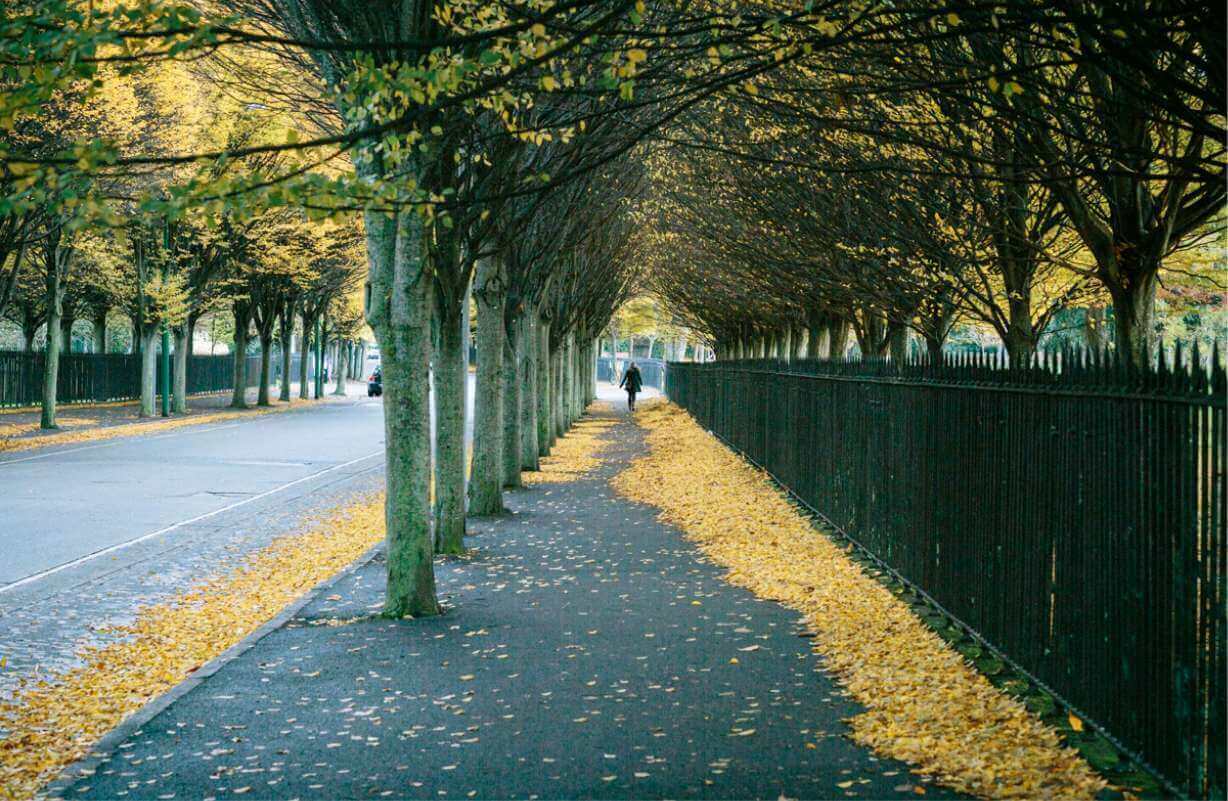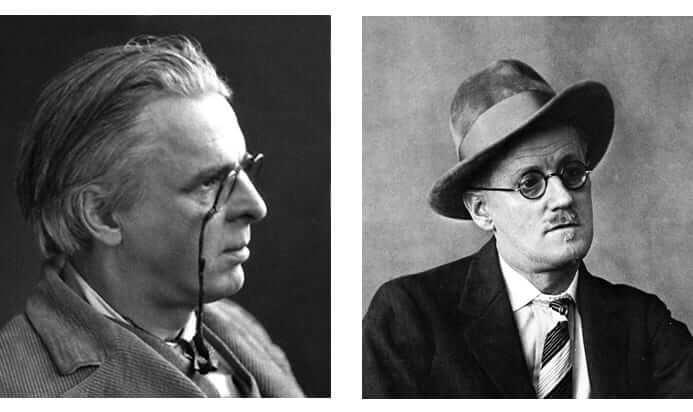
Built from humble beginnings in the 1600s, the area evolved from mud flats and marsh, where a number of roads met within the hamlet of Ballsbridge. Nevertheless, by the early 1800s, the village had progressed substantially, with the Pembroke Estate helping develop it into a fashionable and thriving district.

Trinity College’s Botanic Garden was moved to its site on Lansdowne Road in 1806.
Later that century, the Royal Dublin Society (RDS) similarly relocated their headquarters to Ballsbridge in the 1870s. The new RDS had a profound influence on the area’s development. As it continued to expand and develop, the RDS quickly became Ireland’s premier venue.
Ballsbridge has been home to countless famous Dublin residents over the centuries.
From James Joyce and W.B. Yeats to Patrick Kavanagh. Master Iron Founder Richard Turner also based himself in Ballsbridge; in addition to the railings that still stand at Lansdowne Place, his world-renowned works include the Palm House at Kew Gardens and the glasshouse in the Winter Gardens at Regent’s Park in London.


In the 1870s, Ballsbridge witnessed the opening of the Lansdowne Road Stadium which, over the years, became synonymous with world-class rugby. The stands were demolished in 2007 and replaced with the now iconic Aviva Stadium. It still holds the title as the oldest rugby ground in Europe.

Uprooting an institution
Since 1687 and its first physic garden, Trinity College Dublin has been a mainstay in the world of botany and cultivation of medicinal plants. Despite such an herbaceous longevity, it must be said that it wasn’t always plain sailing; by the year of 1806, the original college garden was in such poor condition it is said to have comprised of only a single barren fig tree and was overrun by rats. It was for such reasoning that a move to greener pastures was deemed a clear necessity. In July of 1806, the college took on a 175 year lease from the Pembroke Estate for an area of land in Ballsbridge. This area totalled eight acres and forms the expanse of land that makes up Lansdowne Place as we know it today.
The planning of a legacy
The plot of land, bounded by the roads of Pembroke, Lansdowne and Shelbourne, was enclosed by iron railings created (circa 1834) by the world renowned local iron-founder, Richard Turner, that still remain standing to this day. This emerald enclave remained in situ for over a century and a half while its immediate surrounds evolved into an ever more cosmopolitan location.
In the garden’s early years, several large greenhouses were erected, inside which a wide variety of plant species were grown, including ferns, orchids, palms and cacti amongst others. The outer extent of the garden was enclosed by a screen of holm oaks, many of which survive today as mature trees.


In 1879, Frederick W. Burbidge, the accomplished botanical artist and horticultural writer, was appointed curator of the Garden and significantly expanded the collections. Celebrating the college’s tercentenary in 1892, the garden received a gift from the Royal Botanic Garden of Melbourne, Australia — a rare Todea Barbara (the King Fern).
Following the passing of Burbidge in 1905, the role of curator was abolished and the garden placed under the care of a Head Gardener under direction of the Professor of Botany, H.H. Dixon. With Burbidge’s post abolished, the garden began to suffer, a steady loss of land ensued. With much of the garden sold off by early 1960 and the lease coming to a close, it was proposed in 1965 that the garden finally be relocated to its current site at the rear of Trinity Hall, Dartry, Dublin 6.
The Lansdowne Road strawberry tree
The Strawberry Tree of Lansdowne Place is one of the great trees of Ireland. Listed in the Tree Register of Ireland as an exceptional specimen of a rare species, the Strawberry Tree’s elegance and history meant it was carefully preserved and nurtured throughout planning. In fact such emphasis was placed on the tree that it has become the emblem of Lansdowne Place. With its large trunk and remarkably smooth mahogany-red bark, it is easily identified and is set to be an icon of the Lansdowne Place gardens for years to come.



